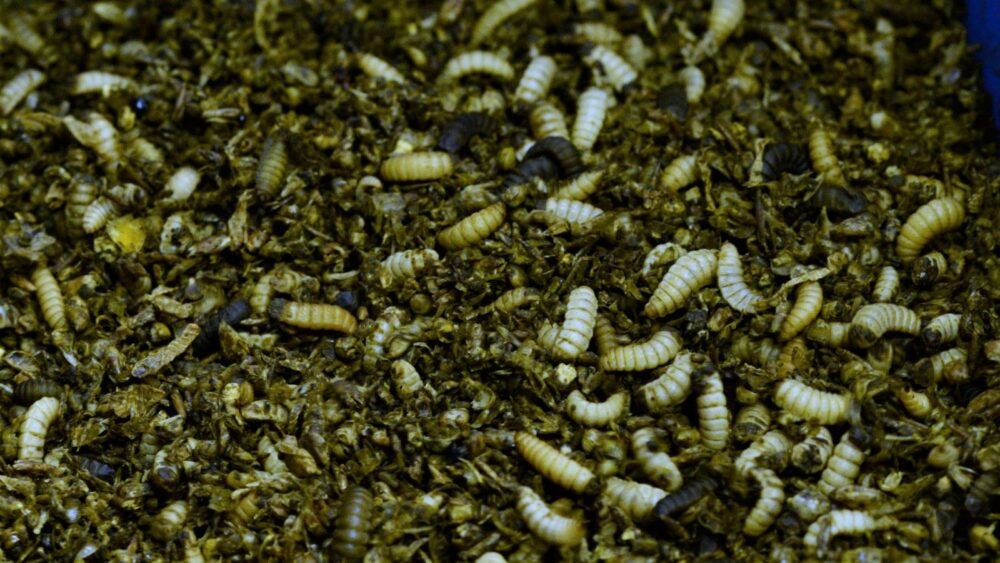Nature's Toolbox: Biotech Solutions for a Climate-Resilient World
Biotech is set to be key in the global green growth economy, and we shed light on this emerging sector below, on the occasion of World Environment Day 2023.
Large companies are setting ambitious sustainability targets, aiming to reduce reliance on packaging materials, adopt recycled and renewable bio-based materials, and design products with end-of-life solutions prioritizing recyclability, compostability, or biodegradability. The majority of Scope 3 commitments are scheduled for completion by 2030. Moreover, there is an accelerating trend towards achieving net-zero emissions between 2040 and 2050. However, significant reductions in greenhouse gas emissions cannot only be accomplished through incremental improvements to traditional production technologies - such advancements typically necessitate a paradigm shift.
Increasingly, companies are seeking inspiration from natural ecosystems and their organisms to drive this paradigm shift. Industrial biotechnology, which involves adapting and modifying biological organisms, processes, products, and systems found in nature, is spearheading this transformative change. Biotechnology employs cells or cell components, such as enzymes, to produce bio-based products across various sectors, including chemicals, food and feed, healthcare, detergents, paper and pulp, textiles, and energy at scale. It often uses materials that we would consider to be wastes, and uses them to make things we would previously have needed fossil fuels for.
The ability to precisely manipulate the genetic make-up of living organisms has also given fresh impetus to the sector, by enabling a transformation of CO2-intensive industries.
Biotechnology can achieve at least 3 billion tons of CO2 equivalent mitigation annually by 2030, using existing technologies, and emerging biotechnologies could have transformative GHG benefits in a range of industrial sectors.
Unleashing Biotech's 3 Billion Ton CO2 Mitigation Potential: Exploring Key Innovation Avenues
I. FOOD CONSUMPTION AND PRODUCTION
One of the most critical areas where biotechnology has the potential to make a significant impact is in food consumption and production, which is central to human existence. Global food production accounts for one-quarter of greenhouse gas emissions. Halting food production isn’t an option, so biotech companies are helping farmers become part of the climate solution.
For instance, Joyn Bio, a collaboration between Bayer and Ginkgo Bioworks in Boston, is developing microbes that extract nitrogen from the air and deliver it to crops, eliminating the need for energy-intensive fertilizers. Acceligen, based in Minnesota, is utilizing precision breeding techniques to enhance livestock health while reducing waste, greenhouse gas emissions, and water usage. Biotechnology also plays a vital role in safeguarding food from the impacts of climate change.
Another promising aspect of biotechnology lies in the deployment of cellular agriculture to create novel protein biomass, leather, leather analogs, lipids like palm oil and dairy fat, cocoa, whiskey, ivory, honey, fur, cotton, and growth factors for tissue engineering. These bio-similar compounds could be used to recreate the functionality of any agricultural product that we want to displace because current practices are any of the following: economically inefficient, water intensive, land intensive, carbon-emitting, polluting, labor intensive, unpredictable, or inhumane. Cellular agriculture can allow for economic development that is decoupled from land use, water use, and carbon emissions of intensive animal agriculture or other unsustainable farming practices. And so, it is a key food security, food sovereignty, and biosecurity initiative of innovative (and small) countries like India and Singapore. The greatest opportunities lie in vertically integrated companies pursuing product white spaces like hard-to-produce plant and fungi flavors like truffles, saffron etc, extinct species like Geltor’s mastadon gelatin gummies, animal textile, bioprospecting and goods with problematic supply chain. String Bio, an India-based company, produces protein-rich animal feed by utilizing methane-producing bacteria and low-value feedstock such as waste wood and agricultural waste. Metalchemy, a London-based nanotech startup, integrates silver nanoparticles derived from plant extracts into natural and biodegradable packaging, effectively extending food shelf life.
Another emerging trend in the field involves the cultivation of genetically engineered microalgae as a promising feedstock for renewable energy production. These microalgae exhibit exceptional attributes, including rapid growth rates, elevated lipid productivities, and an impressive ability to sequester carbon. Notably, studies have indicated that a single kilogram of algae biomass can effectively fix 1.83 kilograms of CO2. Prominent players in the industry, such as Fermentalg, are actively spearheading the commercialization of microalgae technology. They have designed genetically engineered algae capable of capturing CO2 and transforming it into biofuels.
II. INSECT PROTEIN
Insect protein presents itself as an important climate solution due to its sustainable production, low greenhouse gas emissions, efficient resource utilization, land use efficiency, and potential for biodiversity preservation. As people become more conscious of their carbon footprints, including their pets' "pawprints," insect protein is increasingly embraced by pet owners as a viable and marketable alternative to traditional meat. Recently, the European Commission certified the yellow mealworm, or mealworm beetle larvae, as safe to eat, marking the first insect approval in the 27-nation bloc. Ynsect, a French insect food company backed by Robert Downey Jr.'s Footprint Coalition, specializes in producing insect protein and fertilizer using yellow mealworms.
The black soldier fly is also gaining attention in insect farming due to its exceptional waste conversion capabilities, high protein content, and efficient life cycle. One acre of black soldier fly larvae can produce the same amount of protein as 3,000 acres of cattle or 130 acres of soybeans. The larvae can be dried, turned into flour, or used for oils.
Insectta, based in Singapore, uses black soldier fly larvae to convert food waste into fertilizer and animal feed. Mars Petcare, a part of Mars, the confectionery giant, introduced Lovebug, a dry cat food made from black soldier fly larvae insect meal. The larvae are fed surplus veggies and plants and sourced from a farm powered by 100% renewable electricity.
III. SYNTHETIC BIOTECHNOLOGY
The potential of synthetic biotechnology to modulate the fast carbon cycle, and thereby mitigate climate change is in itself enormous, but if the history of genomics is any measure, it is also reasonable to expect sizeable economic returns on any investment. The discovery tools of metagenomics and quantitative proteomics are now reaching maturity and are starting to be rolled out from large research institutions to smaller universities and research organisations.
Many synthetic biology start-ups have designed all-new products that require fewer natural resources to make than those they replace, and are also redesigning traditional processes, while developing new ways of manufacturing familiar things that are more environmentally sustainable than existing ones, which tend to rely on petrochemicals, their derivatives, or other ecologically hazardous chemicals. Cell-based processes also often boost output, since scientists can engineer those strains of microorganisms that will deliver the maximum yields. Several mining companies—such as Rio Tinto in Spain and Cananea in Mexico—are experimenting with bio-leaching and bio-oxidization.
Several companies are trying to bio-fabricate luxury materials such as leather. Making leather is a costly and labour-intensive process, and it has a large carbon impact. New Jersey-based Modern Meadow has started growing a strain of yeast that it engineers to produce collagen, the protein that gives leather its strength and stretch. California-based start-up MycoWorks, a startup developing leather from mycelium - recently began a collaboration with Hermès to develop bio-leather with a patented technology that enhances mycelium as it grows.
By the end of the decade, synthetic biology could be used extensively in manufacturing industries that account for more than a third of global output—a shade under $30 trillion in terms of value—according to a BCG study.
IV. NEXT-GEN BIOFUELS
Fuel is another target for biotechnology, as transportation accounts for a high percentage of greenhouse gas emissions. While electric cars are gaining popularity, biofuels — which are carbon neutral — will be needed to help reduce emissions in transportation and need will comparable support to scale up.
The biotech company Synthetic Genomics (Viridos), for instance, is utilizing saltwater algae, which converts sunlight and carbon dioxide into biomass, to make sustainable auto fuel. By 2025, 10,000 barrels of the algal biofuel could be produced per day for commercial use. Biofuels will also play an important role in air travel. While commercial flights account for less than 3% of global CO2 emissions a year, on a per-mile calculation, it is the least green form of travel.
Companies like Neste, Gevo, and World Energy are using everything from algae to used or wasted cooking oil to create sustainable jet fuels. LanzaTech recycles carbon from industrial emissions and other sources and turns it into aviation fuel — and has recently partnered with other corporations to bring that fuel to market for commercial airline use. In Norway, cruise ship and ferry company Hurtigruten is planning to power its ships by processing fish waste from the fishing and animal-feed industries into a liquid oil. However, while some of these innovations have come to market, a major challenge is competing on cost with products made the traditional way.
V. GREEN CHEMISTRY & BIO-MATERIALS
In the past 10 years, significant advances have been made in the development of chemicals and materials from renewable feedstocks and harvest vegetal waste, or “agro-waste”. These for example, have included beauty and personal care products from sugars and lignocellulose, composites and fibrs from cellulose and lignin, plastics, foams and thermosets from lignin and plant oils, and even electronic materials from chicken feathers. Singapore-based Greenitio is developing functional plant-derived biopolymer ingredients, such as hydrophobically modified polysaccharides and modified plant proteins, to replace microplastics. Additionally, they are working on edible plant protein microcapsules for flavor and bioactive delivery in the cosmetics, food, and agriculture industries.
Agricultural waste in India is abundant, since roughly 60 percent of the population relies on agriculture for a living. According to Indian Council of Agricultural Research, India produces 350 million tons of such agro-waste each year. Taking a single crop of potato for example, total world potato waste is estimated to be 12 million tonnes per annum out of which 2 million tonnes of potato waste is generated in India alone. This represents a great opportunity, not only because its use and exploitation favors the reduction of fossil fuel use and greenhouse gas emissions but also because it contributes to the development of new green markets and jobs by promoting the conversion of this agro-waste into value-added products such as feed, bio-products and bioenergy.
LOOKING AHEAD
Climate biotechnology as a sector demonstrates its worth as a catalyst for sustainable industrial development as well as a large contributor to the green growth agenda. Not only does it yield in operational cost reductions, but it also effectively curtails the environmental impact associated with material production.
At Theia Ventures, we firmly believe that the climate biotechnology industry holds immense potential to serve as a fundamental pathway towards establishing cleaner and greener methods for producing, distributing, and consuming materials and commodities across the commodity supply chain. We are committed to supporting and investing in visionary climate biotechnology companies addressing this large market opportunity, that underscore these emerging trends.








